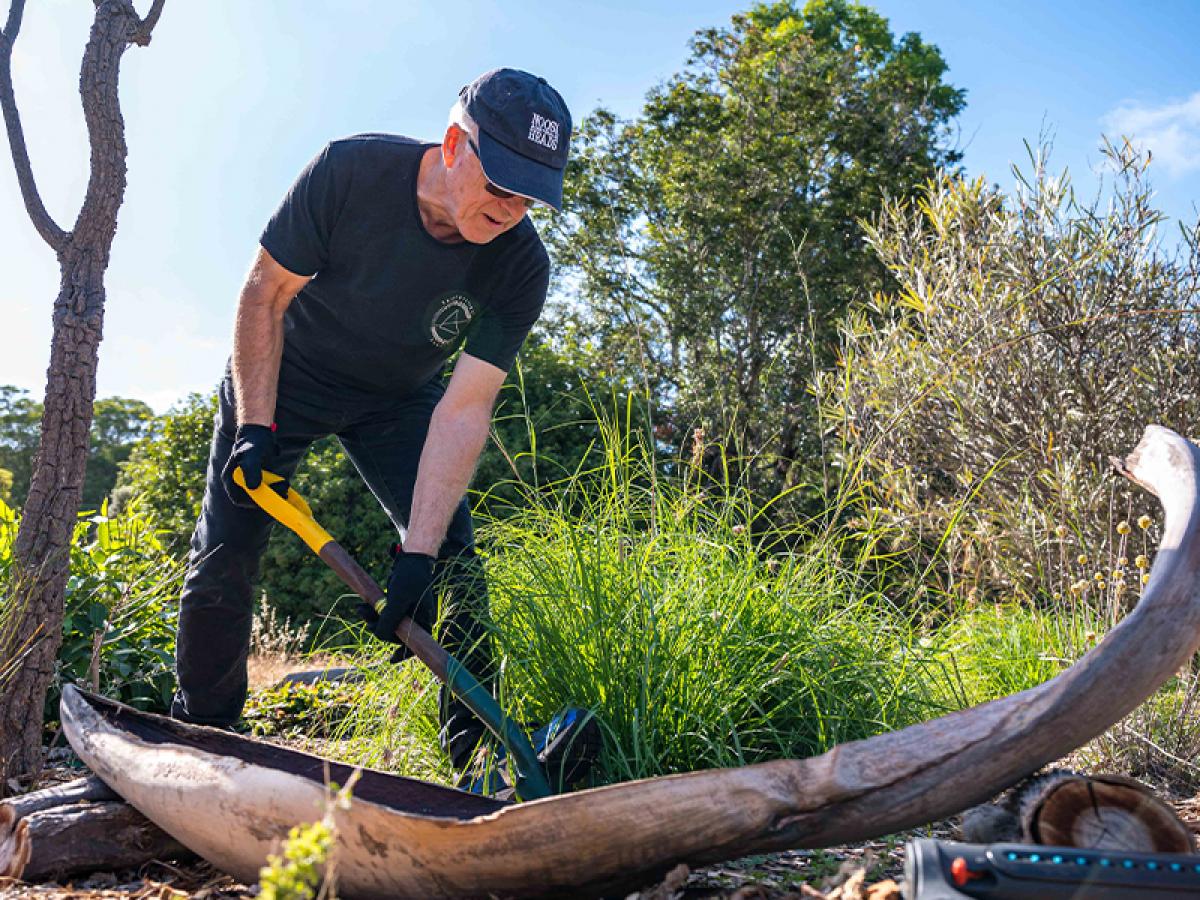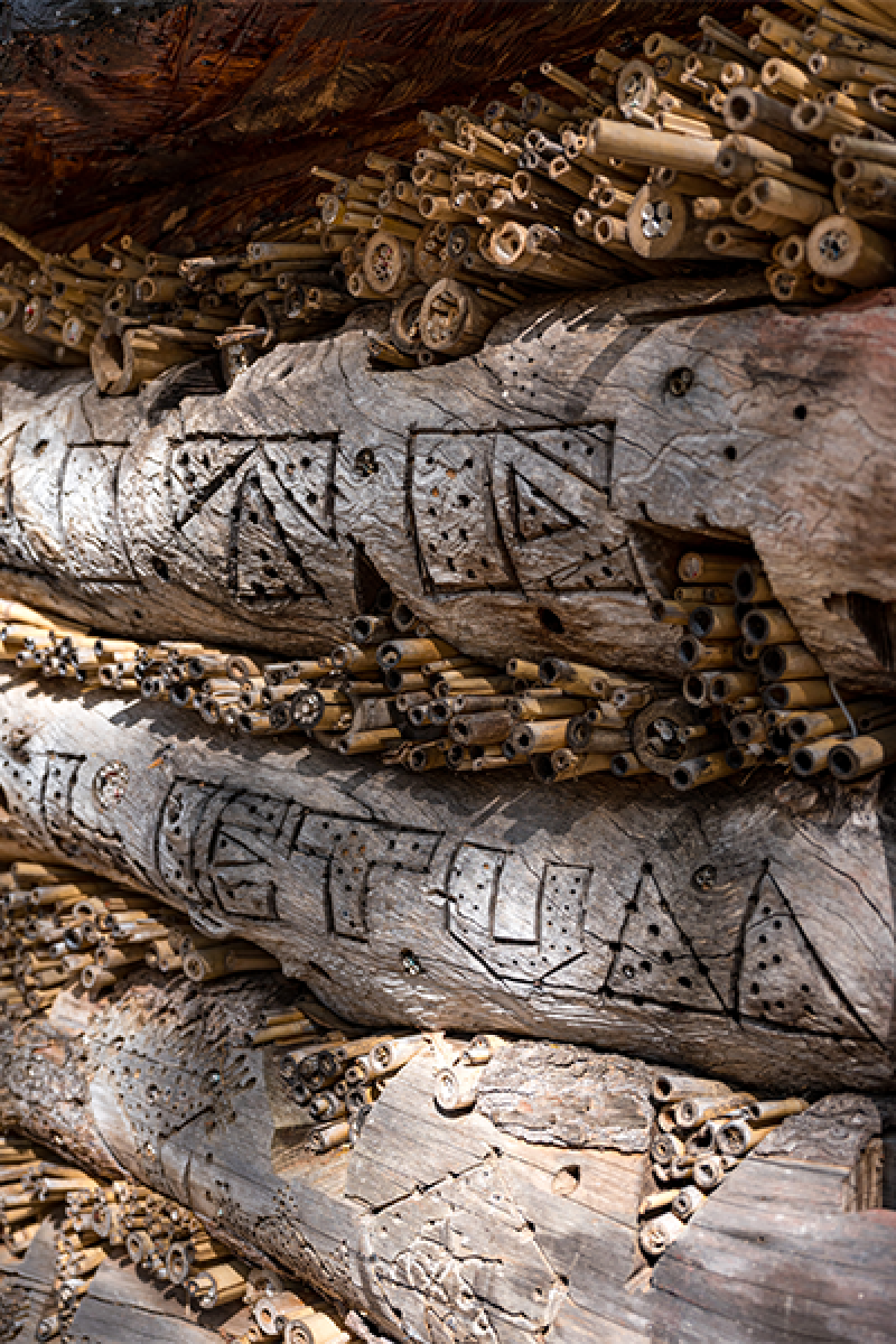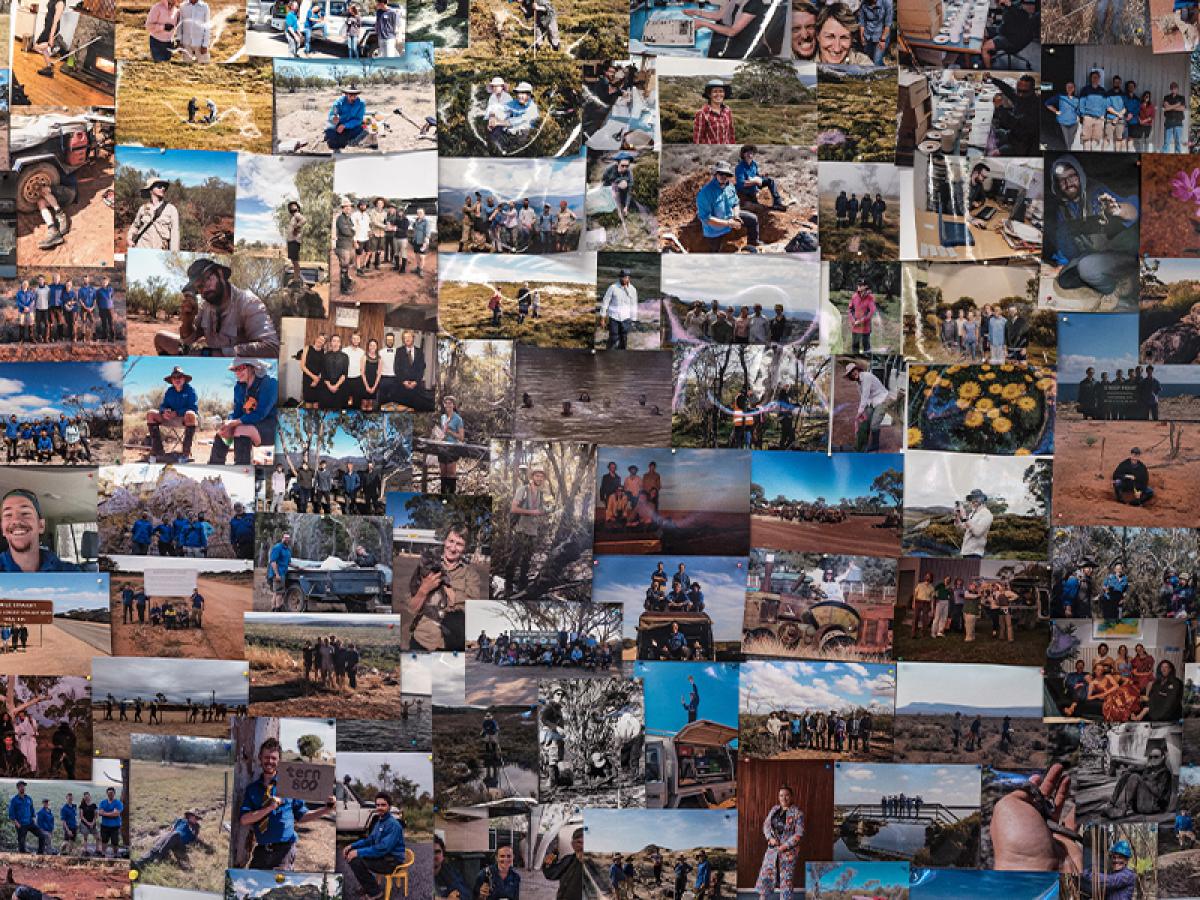Volunteers in the wild

Volunteer Les at the BB&B
While volunteers may not be the first thing that come to mind when you think of the University of Adelaide, their work can be found across all facets of daily life on campus and beyond. With about 2,500 volunteers helping around the University, their contributions are vital in providing student and event support, library assistance, outreach programs and sports associations.
“Volunteers can be found in nearly every pocket of the University and we certainly couldn’t do what we do without their skills, knowledge and generous contributions, “ says Kerry James, Senior Volunteer Program Coordinator at the University.
But not all volunteers can be found engaging in the day-to-day experiences on campus - some can be found in far-flung deserts, sifting through samples, while others are aiding the creation of habitat and biodiversity in our own backyard.

Native bee hotel
At the Waite campus, we find the arboretum, a 27-hectare parcel of land which contains unique corridors that have transformed into a teeming haven for bees, butterflies and birds. A generous donation in 2019 for a memorial for a passed loved one allowed
Dr Kate Delaporte, Waite Arboretum Curator, to propose the idea of creating a biodiversity garden.
Together with Erica Boyle, Waite Arboretum Officer and Volunteer Coordinator, they envisioned the creation of a space that would utilise native plants to attract more wildlife to the area and provide education for the public, local schools and University students, thus forming the BB & B (Bee, Butterfly and Bird) garden. In the five years since its inception, there has been significant change within the Arboretum.
With just a brief look at the BB & B garden, you can see bees nestling into their five-star suites at the Native Bee Hotel. Next door are the architecture school-built tripods providing a refuge for birds and butterflies using host plants to spawn the next generation of pollinators.The incredible success rate of this ‘habitat corridor’ would not be possible without regular weeding, watering, marking and maintenance of the gardens by volunteers.
One of these is Les, who graduated with a degree in engineering at the University in 1971, and has found himself back on campus volunteering at the Arboretum.
Les is one of the eight volunteers involved in the development and maintenance of the BB & B, and has been volunteering for nearly two years, joining his brother-in-law to expand the garden to its current 700 square metres.
“Sometimes in retirement, your life can just become sedentary, but this gives you an activity that helps, which is why we do it.We don’t want money or thanks, we just want to help,” says Les. In addition to their work, the volunteers have a social outlet, often trading friendly jabs, having coffee together and learning about the space they care for.
With land clearance and a lack of native species in most backyards, Erica encourages people to incorporate some native species, providing through the arboretum website a list of plants that can be used. “Even if you have a garden full of exotic plants but choose the right few native plants to improve the habitat possibilities in some way - that’s really good.”

Native Bee Lipotriches sp. ElisabethWilliamson
To further educate the public and students, Erica created an interactive map of the arboretum BB & B garden that provides information surrounding the species used and the animals and insects that call them home. Her efforts in creating this educational tool won her the Faculty of Sciences - Science Communication Prize and her work was presented as part of the 7th Global Botanic Garden Congress held in Melbourne in September 2022 - for which she was also awarded the 2022 Professional Staff Development Scholarship.
With a hub of volunteer activity occurring within the Arboretum and Urrbrae House gardens every Tuesday and Friday, the majority of the volunteering for the University would appear to be spoken for. But just up the road a very different type of work is being conducted involving thousands of volunteer hours out in the field spanning the entire country.

Volunteer wall at TERN
Ecosystem research
TERN (Terrestrial Ecosystem Research Network) is based at the Waite campus in the School of Biological Sciences. Its primary work involves a national program of standardised ecological field surveys and the TERN Australia Soil and Herbarium Collection, which provides academics both nationally and internationally with crucial data and samples for research across a diversity of disciplines including climate change, taxonomy and medicine.
TERN can achieve in the field what many researchers lack the resources to do themselves, by freely providing them with data. However, you can’t obtain over 150,000 vegetation and soil samples without logistics, staff and of course, volunteers.
With over 20,000 vegetation voucher specimens requiring digital scanning, in addition to field surveys at about 100 plots across Australia, 2023 is a busy year. And that’s only the beginning.
“Whether it’s fieldwork or helping to manage the data and samples by pressing plants, curating and processing the soil and vegetation samples - it’s all work where volunteers can get involved,” says
Dr Katie Irvine, Community Partnerships Coordinator at TERN. Volunteers include current students, postgraduates, retirees, and people working within the industry. The field trips can be the most demanding and rewarding parts of volunteering for TERN, with two-week long stints, up to 12 hours a day with an average of a plot a day. There’s a lot involved in collecting soil and vegetation data and samples across the country.
TERN plots are resurveyed every 5 - 10 years to measure changes in the environment. More recently TERN received funding to undergo a post bushfire survey, revisiting sites they already had data on to compare the changes in the aftermath of the Black Summer bushfires.
The value of data and information collected by TERN’s staff and volunteers has resulted in numerous findings around the world. For example, samples provided to the NSW government were instrumental in identifying new species diversity in golden everlasting paper daisies. And scientists from Rockefeller University in NewYork discovered important medicines and agricultural chemicals in the biological compounds of TERN’s soil samples.
As the collection of data and samples continues, so do the opportunities for discovery and a better understanding of our environment.
Story by Isaac Freeman, Communications Assistant.
Volunteers needed: how you can help
The many hours of dedication and passion from our volunteers in the environmental space featured in this article shows the difference being made, and the value of
what like-minded individuals can achieve together for the sake of our environment.
We welcome students, staff, alumni and the general public to participate as volunteers.
There is a wide and interesting range of opportunities available, with one likely to suit you.
If you would like to be part of the University’s vibrant and diverse volunteer community, please visit our website or contact Kerry James.
